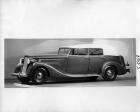|
Re: 1953 Delco Vacuum Advance
|
||||
|---|---|---|---|---|
|
Home away from home
|
Quote:
Oh, I missed that Jason will rebuild them! I can read.......really! LOL Ross makes a good point, there are several things going on with the advance, both the mechanical and vacuum and while they might "work" they need to be correct to work well. I should really have my distributor bench tested to make sure it's within spec. Attach file:  dist specs.jpg (28.77 KB) dist specs.jpg (28.77 KB)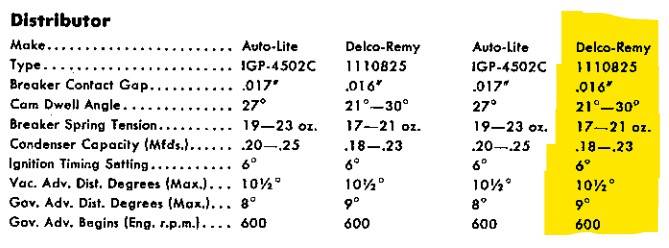
Posted on: 2023/8/31 13:00
|
|||
|
||||
|
Re: 1953 Delco Vacuum Advance
|
||||
|---|---|---|---|---|
|
Home away from home
|
Quote:
The more I research the more I wonder too. I know if my advance isn't working, but when it is working is it working correctly? I think I'll get my vacuum advance rebuilt and then find someone that can bench test my distributor.
Posted on: 2023/8/31 13:10
|
|||
|
||||
|
Re: 1953 Delco Vacuum Advance
|
||||
|---|---|---|---|---|
|
Home away from home
|
Quote:
Golden is just how I want things to be for my Packard!  If I have the original distributor, which now has new bushings, and rebuild my original Delco vacuum advance how concerned do you think I should be about getting my distributor bench tested?
Posted on: 2023/8/31 13:23
|
|||
|
||||
|
Re: 1953 Delco Vacuum Advance
|
||||
|---|---|---|---|---|
|
Home away from home
|
I have one in my shop from a 1954 Patrician but don’t recall the number offhand. Used but in excellent condition and, of course, would be vacuum tested before shipping. Unfortunately I’m quite ill right now so not sure when I’ll get back up there but if you’ve not found one, send a PM at some point.
Posted on: 2023/8/31 16:08
|
|||
|
||||
|
Re: 1953 Delco Vacuum Advance
|
||||
|---|---|---|---|---|
|
Home away from home
|
My ’54 copy of “Motor’s Auto Repair Manual” establishes that for the Delco 1110841 distributor the chamber plunger should begin to move at 5-7 inHg, and achieve maximum stroke of 4-6 degrees (distributor) at 11 inHg. I think we can read into this information that the design intent is to have full vacuum advance at cruise power . . . now, what hardware feature establishes the maximum stop?
As I understand that system the spring material & geometry (wire diameter, OD of coil, number of active coils), coupled with the chamber area, establishes the amount of vacuum pressure that is required to stroke from ‘begin to move’ to the maximum stop. The free length of the spring and the shimming establishes the vacuum required to begin the stroke motion. Ross is correct (we would expect nothing less), if only the diaphragm is changed, and you started with all of the correct ‘hard-parts’ then you will likely have a working unit for your car. Now for some intrigue: A few years ago I ran into another detail concerning vacuum chambers for Delco distributors, that is, what feature establishes the ‘high-stop’ limiting the travel of the chamber. The ‘Motor’s’ manual establishes so many inch of mercury to achieve the maximum stop, but otherwise is silent on what feature represents the maximum stop. There are two possibilities, the first case is coil binding in the compression spring, while the second case is a hardware feature that inhibits further diaphragm motion. See attached file for details of what I believe controls the maximum stop. When I mention ‘failed unit’ in the presentation that would be the chamber that was installed in my ’54 Cavalier when I purchased the car, and the ‘replacement unit’ refers to a replacement I bought from one of our trusted suppliers. If I have interpreted the situation correctly the geometry of the opening in the actuation arm controls both the minimum and maximum stop. The maximum stop is therefore not likely achieved by coil binding. I believe Delco would tailor a chamber to the customer’s needs by matching arms and springs, while most of the remaining parts were unchanged, which results in many vacuum chamber part numbers that would physically fit the distributor body, but perhaps have completely different performance characteristics. I believe each arm geometry is identified by a unique number, and there are many arms that will physically fit in a distributor intended for a Packard distributor. The minimum stop arm geometry is likely identical among many Delco units because that is a detail required to specify the free length of the compression spring. My sample size is far too small to draw conclusions, but my concern is there are vacuum chambers with actuation arms that were not intended for Packard applications, or the Packard application has been misidentified. At this point it is speculation whether a rebuilder installed an inappropriate arm (the arm would be re-riveted to a new diaphragm during the rebuilding process), or our supply pipe-line has been contaminated with chambers intended for different automobiles. The search for the patent documents continues. Those document are likely to justify the means to achieve the maximum stop as a ‘unique feature’. I guess what I’m trying to say is “just because the chamber fits the distributor there is no guarantee that the calibration is correct” . . . but if you look at the air gap between the ‘tang’ and the opening in the arm you can estimated the total stroke (some arithmetic required). dp
Posted on: 2023/8/31 19:00
|
|||
|
||||
|
Re: 1953 Delco Vacuum Advance
|
||||
|---|---|---|---|---|
|
Home away from home
|
DavidPackard, I think you raised more questions than you answered! LOL
But I'm in full agreement, just because the vacuum advance fits on the distributor, does not make it the correct one. It's not just on and off, and as you point out how far on is all the way on has a specification as well. The investigation into vacuum advance has been kind of intriguing, and a bit of a rabbit hole! My car has done a very good job at providing rabbit holes to investigate!! 
Posted on: 2023/8/31 20:57
|
|||
|
||||
|
Re: 1953 Delco Vacuum Advance
|
||||
|---|---|---|---|---|
|
Home away from home
|
1of750 & 53 Cavalier
If either of you has a failed vacuum chamber would you document the total stroke and the number stamped on the arm (assuming there is one)? If the fitting and spring are removed there will be really no force impeding the motion of the diaphragm. When a replacement is available repeat the measurement. I’m just trying to expand the sample size of arm configurations beyond my current limited experience. Bye the way, with today’s octane I’m not sure the engine wouldn’t mind a little more ignition timing at light load. A high vacuum reading, and the throttle open enough to provide full vacuum to the chamber must be a transient condition. dp
Posted on: 2023/8/31 21:48
|
|||
|
||||
|
Re: 1953 Delco Vacuum Advance
|
||||
|---|---|---|---|---|
|
Home away from home
|
I saw your message just after I finished packing mine all up to ship to get rebuilt! LOL
Here are a few pictures. As you can see in the one picture there is a little tang there creating a hard stop for the arm. The arm on this one travels 0.125" or 1/8". Attach file:  20230831_204116.jpg (105.51 KB) 20230831_204116.jpg (105.51 KB)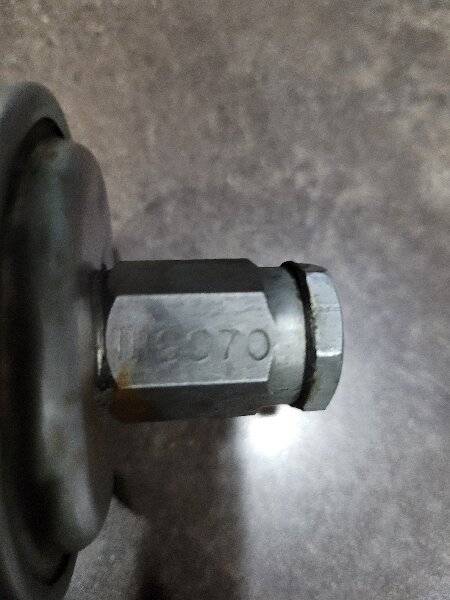  20230831_204105.jpg (139.61 KB) 20230831_204105.jpg (139.61 KB)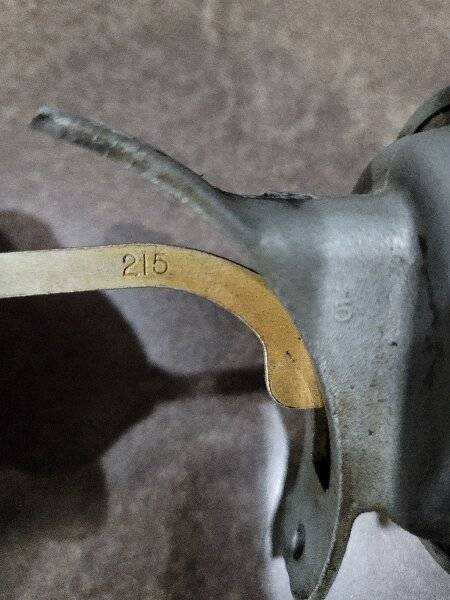  20230831_203943.jpg (184.75 KB) 20230831_203943.jpg (184.75 KB)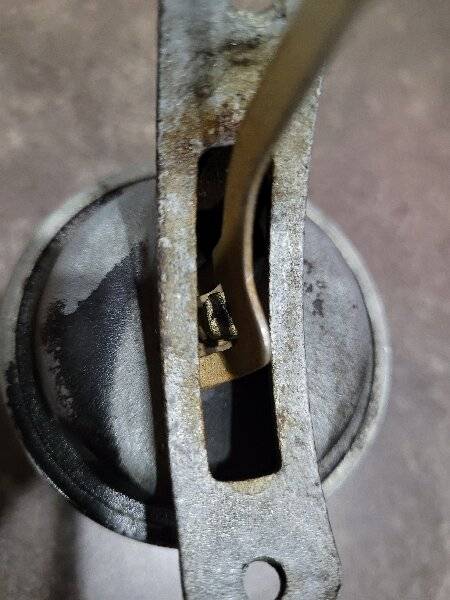
Posted on: 2023/8/31 22:21
|
|||
|
||||
|
Re: 1953 Delco Vacuum Advance
|
||||
|---|---|---|---|---|
|
Home away from home
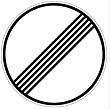
|
A couple of months ago I went through my Distributor, and had to replace the vacuum pot. When I added an extra washer inside, it shifted the vac advance.
From my Caribbean Blog page: Adding the washer shifted the vac advance curve. Before, advance started at 4,5 in, and was all in by 6. Now it starts at 6, and is all in by 9 inches of mercury. My 359 has not had any pinging under load, with this setup.
Posted on: 2023/9/1 2:46
|
|||
|
1953 Clipper Delux Club Sedan, 1969 912, 1990 Miata, 2009 Ford S-Max.
|
||||
|
||||

 VacuumChamber002 [Compatibility Mode].pdf
VacuumChamber002 [Compatibility Mode].pdf


